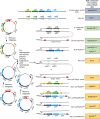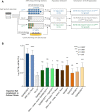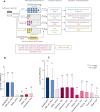Detection of differentially culturable tubercle bacteria in sputum using mycobacterial culture filtrates
- PMID: 33753820
- PMCID: PMC7985135
- DOI: 10.1038/s41598-021-86054-z
Detection of differentially culturable tubercle bacteria in sputum using mycobacterial culture filtrates
Abstract
Rapid detection of tuberculosis (TB) infection is paramount to curb further transmission. The gold standard for this remains mycobacterial culture, however emerging evidence confirms the presence of differentially culturable tubercle bacteria (DCTB) in clinical specimens. These bacteria do not grow under standard culture conditions and require the presence of culture filtrate (CF), from axenic cultures of Mycobacterium tuberculosis (Mtb), to emerge. It has been hypothesized that molecules such as resuscitation promoting factors (Rpfs), fatty acids and cyclic-AMP (cAMP) present in CF are responsible for the growth stimulatory activity. Herein, we tested the ability of CF from the non-pathogenic bacterium Mycobacterium smegmatis (Msm) to stimulate the growth of DCTB, as this organism provides a more tractable source of CF. We also interrogated the role of Mtb Rpfs in stimulation of DCTB by creating recombinant strains of Msm that express Mtb rpf genes in various combinations. CF derived from this panel of strains was tested on sputum from individuals with drug susceptible TB prior to treatment. CF from wild type Msm did not enable detection of DCTB in a manner akin to Mtb CF preparations and whilst the addition of RpfABMtb and RpfABCDEMtb to an Msm mutant devoid of its native rpfs did improve detection of DCTB compared to the no CF control, it was not statistically different to the empty vector control. To further investigate the role of Rpfs, we compared the growth stimulatory activity of CF from Mtb, with and without Rpfs and found these to be equivalent. Next, we tested chemically diverse fatty acids and cAMP for growth stimulation and whilst some selective stimulatory effect was observed, this was not significantly higher than the media control and not comparable to CF. Together, these data indicate that the growth stimulatory effect observed with Mtb CF is most likely the result of a combination of factors. Future work aimed at identifying the nature of these growth stimulatory molecules may facilitate improvement of culture-based diagnostics for TB.
Conflict of interest statement
The authors declare no competing interests.
Figures





References
-
- WHO . Global Tuberculosis Report 2019. Geneva: World Health Organization; 2019.
Publication types
MeSH terms
Substances
LinkOut - more resources
Full Text Sources
Other Literature Sources

